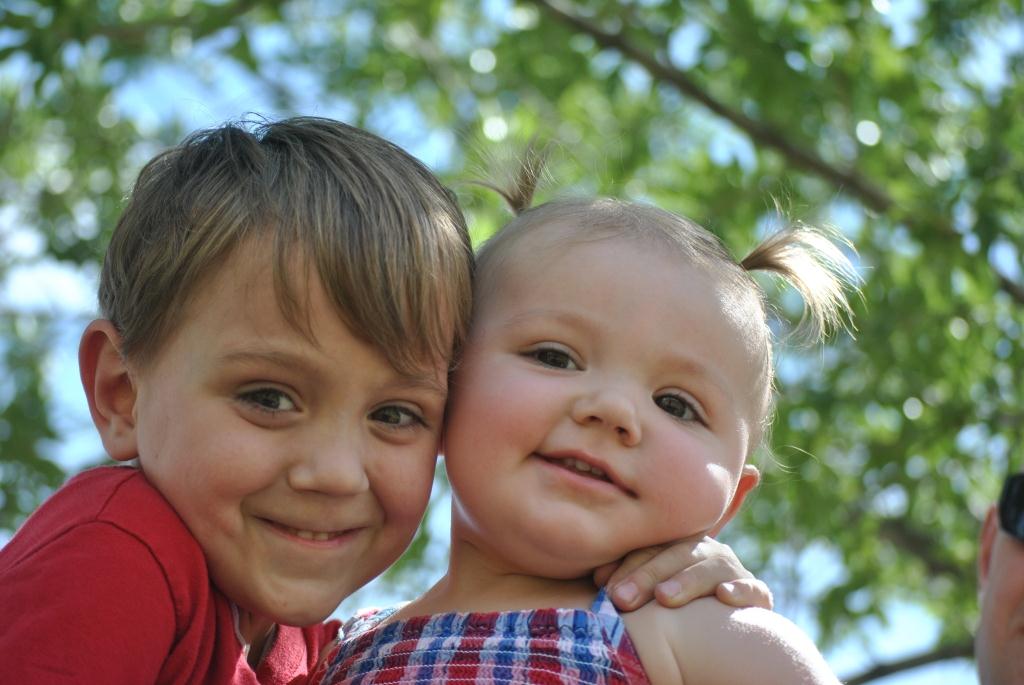New Gene Treatment Offers Hope for 'Bubble Boy Disease'

When her son, Colton, developed asthma-like symptoms and coughing at just a few months old, Jessica Ainslie took him to the doctor. Breathing treatments seemed to do the trick, but Colton was soon sick again — he developed thrush (an oral fungal infection), had trouble keeping food down, and was struck by various other ailments. Ainslie said she knew Colton's condition was beyond normal newborn illnesses.
"I just thought, there's something wrong here," said Ainslie, who lives in Peoria, Ariz. After many rounds of tests, doctors discovered that Colton had a rare genetic condition called severe combined immunodeficiency (SCID), sometimes referred to as the "bubble boy disease." Children with SCID are unable to fight any infection, and in the days before treatments were available, typically did not survive past age 2.
But today Colton is a happy 5-year-old who proudly attends kindergarten. He likes ketchup and loves chocolate milk, and is a raging fan of the Avengers, Ainslie said.
That's because when Colton was 1 and a half, he received a new gene therapy treatment. Doctors removed about a cup of his bone marrow, isolated the marrow's stem cells, and over five days in a laboratory, treated those cells with a virus that was engineered to "infect" the cells with the gene that Colton was missing. They then re-injected the cells into his body.
Once those stem cells set up shop inside Colton's bones, they began to produce the white blood cells he'd been unable to make before.
"He got kind of chunky," Ainslie said. "He started to catch up."
In fact, Colton is one of 18 children with SCID who have received this gene therapy treatment, and all have seen similar results — they have developed functioning immune systems, and have a quality of life that is nearly normal, said Dr. Donald Kohn, a professor of pediatrics and of microbiology, and a stem cell transplant specialist at the University of California, Los Angeles. The results of the clinical trial that Colton was a part of, which included the first 10 children treated between 2001 and 2009, are published today (Sept. 11) in the journal Blood.
Sign up for the Live Science daily newsletter now
Get the world’s most fascinating discoveries delivered straight to your inbox.
All the children in the study had one particular form of SCID — they lacked a specific gene called ADA, Kohn said. About 15 percent of children with SCID have this form of the disease, he said.
Before the gene therapy, there were two treatments available for children with this type of SCID: if they had a sibling who matched them on certain genes, the sibling could donate bone marrow. This treatment has worked well and enabled these children to live largely normal lives, but only about 25 percent of children had such a sibling. Other children could receive twice-weekly injections of the ADA enzyme they were missing, and this treatment also worked reasonably well, but the injections cost about $500,000 yearly, and are needed for the child's entire life.
"Gene therapy holds hope for a better treatment — it's safer and more cost-effective," Kohn said. No donor is needed, and the treatment is much more cost-effective than the injections, said Kohn, who co-lead the study with Dr. Fabio Candotti, of the National Institutes of Health.
The therapy has the potential to trigger side effects. Between the time the marrow is removed and re-injected, children are treated with a chemotherapy drug aimed at killing some of their existing bone marrow cells to "make space" for the new cells, Kohn said. The chemo can cause nausea, vomiting, hair loss and other side effects.
However, the dose of chemo used in the study was low, and none of the children in the study developed these side effects, though their blood cell counts dropped for about a month, he said.
When the researchers first attempted the gene therapy, in 1999 and 2000, the chemo step was not included, Kohn said, and the results were not great. "We treated four patients with the original therapy, and very few of the cells grew into functioning bone marrow," he said. But a report from Italian researchers clued Kohn and his team into the idea of using chemo to boost the therapy's effectiveness. The re-started their trial in 2005.
The children in the study all received the new treatment, including the chemo, at least two years ago now, Kohn said. "They're healthy, they're growing — they're not sick," he said.
The treatment seems to work better when given as early as possible, Kohn said.
Colton's sister Abbygail, who is 14 months old, was also born with SCID, and received the new gene therapy before she was 1. While Colton will likely need some treatments for the rest of his life — he receives periodic immune-boosting injections and lipids, along with antibiotics — Abbygail will likely not need lifelong treatment, Ainslie said.
When Colton gets sick, it takes him a longer time than normal to recover, and he cannot receive immunizations. He also relies on a feeding tube — he is learning to chew and swallow, but still has a difficult time eating, Ainslie said.
"He gets frustrated," she said, "but he keeps trying."
Pass it on: Gene therapy combined with chemotherapy has shown success in fighting "bubble-boy disease" and given sufferers a mostly normal life.
This story was provided by MyHealthNewsDaily, a sister site to LiveScience. Follow MyHealthNewsDaily on Twitter @MyHealth_MHND. We're also on Facebook & Google+.

La Crosse virus disease: The rare mosquito-borne illness that causes deadly brain inflammation
Parasitic worm raises risk of cervical cancer, study finds









